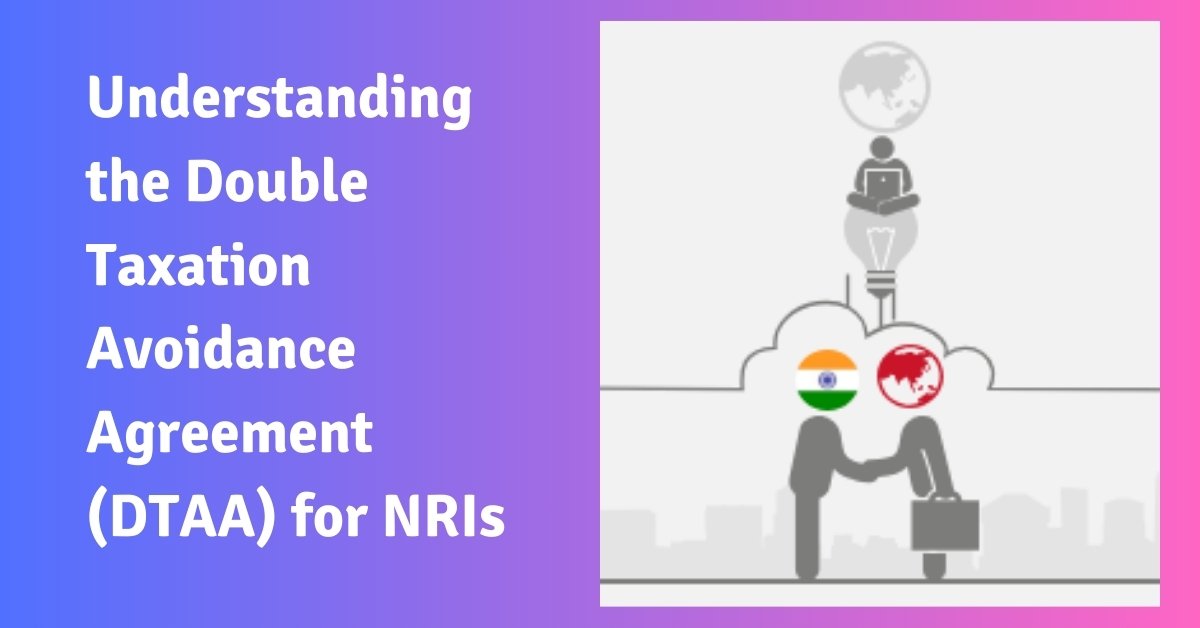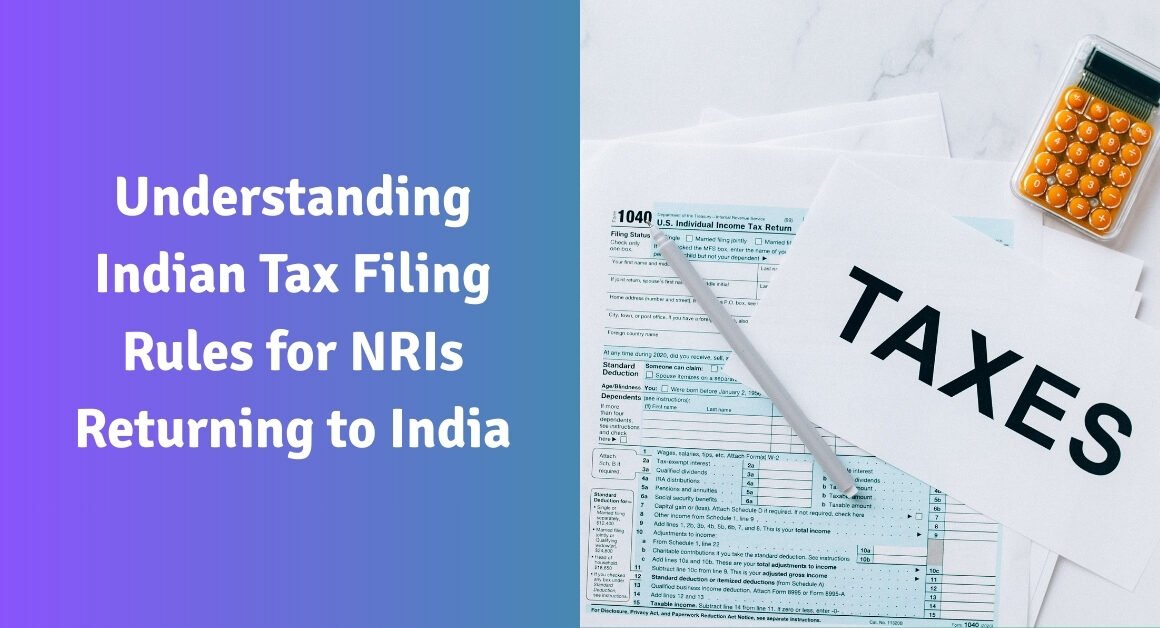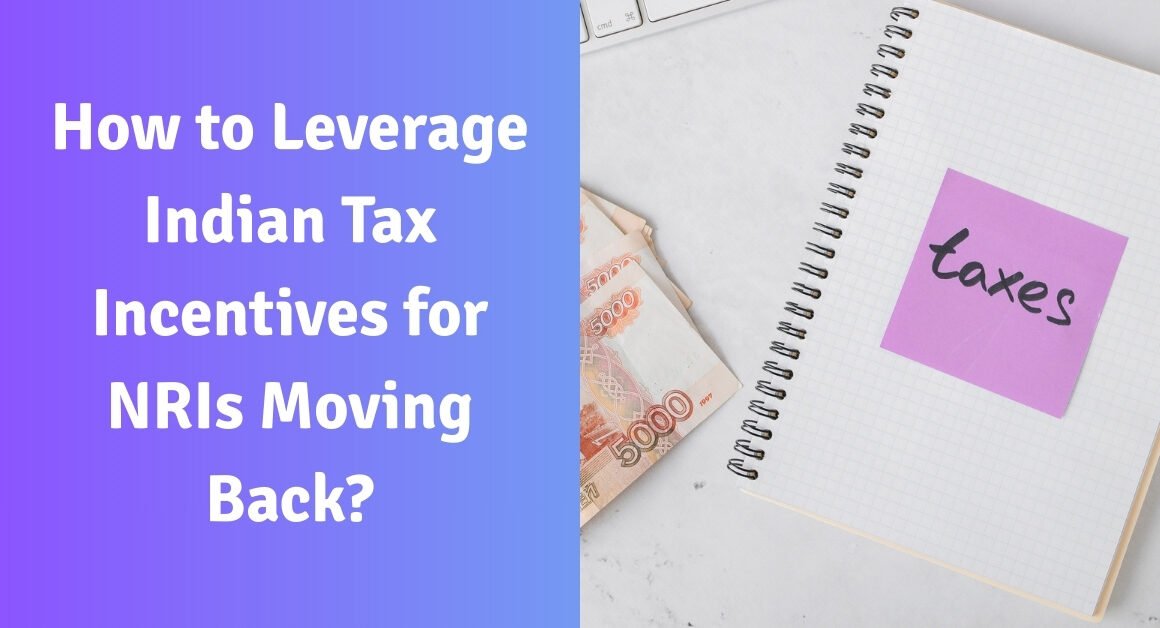As a Non-Resident Indian (NRI), navigating the complex landscape of international taxation can be a daunting task. One crucial aspect that every NRI should be familiar with is the Double Taxation Avoidance Agreement (DTAA). This comprehensive agreement plays a pivotal role in ensuring that individuals are not taxed twice on the same income in different countries. In this blog, we’ll delve into the intricacies of DTAA and its significance for NRIs.
What is DTAA?
The Double Taxation Avoidance Agreement is a bilateral treaty between two countries designed to prevent double taxation of income earned in one country by a resident of another country. For NRIs, this agreement is particularly important as it helps in managing tax liabilities across multiple jurisdictions. India has signed DTAAs with over 80 countries, including popular destinations for NRIs such as the United States, United Kingdom, Canada, and the United Arab Emirates.
The primary objective of DTAA is to promote international trade and investment by eliminating the burden of double taxation. It achieves this by clearly defining which country has the right to tax specific types of income and providing mechanisms for tax credits or exemptions.
Key Benefits of DTAA for NRIs
One of the most significant advantages of DTAA for NRIs is the prevention of double taxation. Without such an agreement, an NRI might end up paying taxes on the same income in both their country of residence and in India. This could lead to a substantial reduction in net income and act as a deterrent to international work and investment.
Moreover, DTAAs often provide for lower tax rates on certain types of income. For instance, many DTAAs stipulate reduced withholding tax rates on dividends, interest, and royalties. This can result in significant tax savings for NRIs with investments or business interests in India.
Another crucial benefit is the provision of tax credits. Under most DTAAs, if an NRI pays tax on a particular income in one country, they can claim a credit for that tax paid when filing their tax return in the other country. This mechanism ensures that the effective tax rate doesn’t exceed the higher of the two countries’ tax rates.
How DTAA Works for Different Types of Income
The application of DTAA varies depending on the type of income. Let’s explore how it works for some common income sources for NRIs:
Employment Income
Generally, if an NRI works in a foreign country, their salary is taxable in that country. However, if they perform work in India for more than 183 days in a financial year, that portion of their income may be taxable in India as well. The DTAA helps determine which country has the primary right to tax this income and how to avoid double taxation.
Rental Income
If an NRI owns property in India and earns rental income, this income is typically taxable in India. The DTAA may provide methods to claim a credit for this tax in the country of residence.
Interest Income
Interest earned on NRE (Non-Resident External) accounts is usually tax-free in India. However, interest from other sources may be taxable. The DTAA often provides for reduced withholding tax rates on interest income.
Capital Gains
The taxation of capital gains can be complex under DTAA. Generally, gains from the sale of immovable property are taxable in the country where the property is located. For movable property, the right to tax often lies with the country of residence.
Claiming DTAA Benefits
To avail the benefits of DTAA, NRIs need to follow specific procedures. This typically involves obtaining a Tax Residency Certificate (TRC) from the tax authorities of their country of residence. The TRC serves as proof of tax residency and is crucial for claiming DTAA benefits in India.
Additionally, NRIs may need to submit Form 10F, which provides additional information not covered in the TRC. It’s important to note that the process and requirements may vary depending on the specific DTAA and the type of income involved.
Challenges and Considerations
While DTAAs offer significant benefits, they can also be complex to navigate. The interpretation of these agreements can sometimes be subjective, leading to potential disputes between tax authorities. Moreover, DTAAs are periodically updated, and keeping track of these changes is crucial for accurate tax planning.
Another challenge is the concept of “tie-breaker” rules in cases where an individual could be considered a tax resident of both countries. These rules help determine which country has the primary right to tax the individual’s global income.
It’s also worth noting that while DTAAs prevent double taxation, they don’t necessarily result in no taxation. The goal is to ensure that the tax paid doesn’t exceed the higher of the two countries’ tax rates for that particular type of income.
Conclusion
For NRIs, understanding and leveraging the Double Taxation Avoidance Agreement is crucial for effective tax planning and compliance. While the DTAA provides a framework to avoid double taxation and offers potential tax savings, its application can be complex. Given the intricacies involved and the potential financial implications, NRIS should consult with tax professionals who are well-versed in international taxation and the specific DTAAs relevant to their situation.
By staying informed about DTAA provisions and seeking expert guidance, NRIs can optimize their tax positions, ensure compliance with tax laws in multiple jurisdictions, and make the most of their global earnings and investments.
FAQs:
- What is the primary purpose of a Double Taxation Avoidance Agreement (DTAA)?
Ans – The main purpose of a DTAA is to prevent individuals from being taxed twice on the same income in different countries. - How many countries does India have DTAAs with?
Ans – India has signed DTAAs with over 80 countries. - Can DTAA benefits be claimed automatically?
Ans – No, NRIs typically need to obtain a Tax Residency Certificate and submit Form 10F to claim DTAA benefits. - Does DTAA mean I won’t have to pay any tax?
Ans – Not necessarily. DTAA ensures you don’t pay more tax than the higher of the two countries’ rates, but it doesn’t guarantee zero taxation. - How does DTAA affect rental income from property in India?
Ans – Rental income from property in India is typically taxable in India, but DTAA may provide methods to claim a credit for this tax in your country of residence. - What is a “tie-breaker” rule in DTAA?
Ans – Tie-breaker rules help determine which country has the primary right to tax an individual’s global income when they could be considered a tax resident of both countries. - Are DTAA provisions the same for all countries?
Ans – No, DTAA provisions can vary between different countries. It’s important to refer to the specific DTAA applicable to your situation. - How often are DTAAs updated?
Ans – DTAAs are periodically reviewed and updated. The frequency varies, but it’s important to stay informed about any changes. - Can I claim DTAA benefits retrospectively?
Ans – In some cases, you may be able to claim DTAA benefits retrospectively, but this often involves a more complex process and may be subject to certain limitations. - Do I need professional help to navigate DTAA regulations?
Ans – Given the complexity of international tax laws and DTAA provisions, it’s highly recommended to seek assistance from tax professionals experienced in this area.
Disclaimer: The information provided here is for educational and informational purposes only and should not be construed as financial, legal, or tax advice. Consult with a qualified professional before making any investment decisions. We do not accept any liability for errors or omissions in this information nor any direct, indirect, or consequential losses arising from its use.





